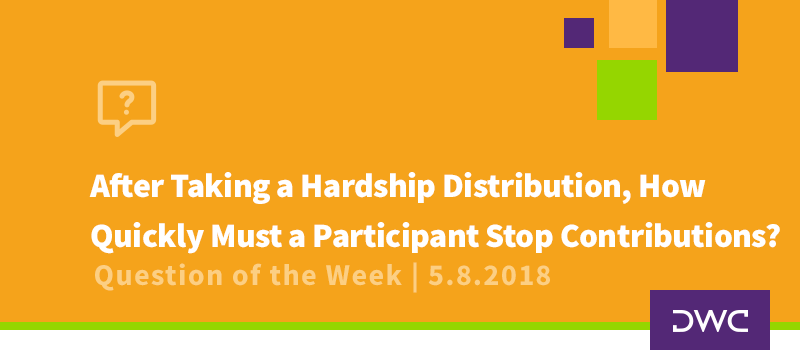
Meet the MEPs: Grab Bag
The Department of Labor’s new regulations that expand the availability of multiple employer plans cover quite a bit of ground. In previous posts, we’ve explored Association MEPs, PEO MEPs, Corporate MEPs, and working owners.
Though not technically part of the regulations themselves, the Department of Labor also addresses a grab bag of questions that came in through the comment process in the preamble. In this post, we will run through some of those items.
Fiduciary Responsibilities
A number of commenters asked the DOL to clarify how some of the general fiduciary responsibilities are applied in the MEP context.
Participating Employers
The DOL makes it clear that a participating employer’s selection of a MEP is a fiduciary act that must be made prudently and in the best interest of plan participants. Furthermore, the employer has an ongoing duty to monitor the MEP sponsor and receive periodic reports from the sponsor regarding its management of the plan to ensure that continued participation in the MEP remains prudent.
MEP Sponsor
Whether an association or a PEO, the MEP sponsor is also a fiduciary and must manage/operate the plan prudently and comply with all applicable fiduciary responsibilities. Those may include acting as the 3(16) plan administrator, selecting and monitoring plan service providers, and constructing and maintaining the plan’s investment menu. The preamble also states that the MEP administrator (rather than each participating employer) is responsible to satisfy all applicable reporting and disclosure obligations for the plan.
One commenter raised concern about all adopting employers being treated equitably within the MEP. The DOL indicates that MEP fiduciaries act on behalf of all plan participants regardless of the size of the employer for which they work. As a result, any advantages, pricing discounts, etc. should be allocated among all participating employers in an equitable manner.
The DOL notes that it will consider updating its online publication on selecting and monitoring plan service providers to include information employers can use to understand their fiduciary duties with respect to MEPs.
Form 5500
Commenters argued both for more expansive and more limited reporting of information related to a MEP’s participating employers on Form 5500. At present, a MEP is required to attach a list to the 5500 each year of all adopting employers along with the approximate percentage of total contributions for the year attributable to each. Through its enforcement activities, the DOL discovered that existing MEPs have not been consistently complying with this requirement and recently published Field Assistance Bulletin 2019-01 to provide relief on this issue for MEPs that ensure proper reporting on their 2018 Forms 5500. They also granted an automatic extension until October 15, 2019, for MEPs seeking this relief.
Relief notwithstanding, the DOL declined to make any changes to the current reporting requirements as part of this regulation. Instead, they will consider whether future guidance making any changes might be warranted.
Fee Disclosure Under 408(b)(2)
This is the fee disclosure information that service providers typically are required to provide to plan fiduciaries. Some commenters asked the DOL to clarify whether the MEP sponsor or the individual participating employers are required to receive these disclosures.
If the association or PEO sponsoring the MEP is also acting as a service provider to the plan, then it must provide the applicable disclosures with respect to its own compensation to participating employers at the time the employer is considering joining the MEP. Although there is no affirmative obligation for the MEP sponsor to provide this information on an ongoing basis, the DOL notes that a participating employer should take into account the sponsor’s refusal to provide such information in its assessment of whether continuing to participate in the MEP is prudent.
Since the MEP sponsor (in its capacity as plan administrator or named fiduciary) is generally the party with the authority to select other plan service providers, the sponsor is obligated to obtain the applicable 408(b)(2) fee disclosures from any providers it engages.
Termination Situations
What happens when a participating employer is no longer part of the association or PEO that sponsors the MEP? The preamble discusses several variations on this theme, but the common question is how to address participants’ accounts if their employers are no longer members of the association or clients of the PEO.
For starters, the DOL confirms that leaving the association or PEO “extinguishes the nexus that supports the conclusion that the group or association or PEO is acting as the ‘employer’…for purposes of sponsoring a plan…” That means when a participating employer leaves the association or PEO, it is no longer eligible to be a participating employer on a go-forward basis. With that said, the MEP sponsor/fiduciaries continue to be obligated to carry out their duties with respect to the remaining participant accounts until such time as those accounts are transferred to another plan or distributed.
Speaking of distributions, a participating employer leaving a MEP does not create a distributable event on its own. There is no severance from employment or plan termination. That means account balances are “locked up” in the MEP until an employee subsequently severs employment. However, that can be a bit cumbersome to manage as the MEP sponsor must now correspond with a former employer member to confirm that the individual in question really is no longer employed. As a work-around, the MEP sponsor and the employer can work together to spin-off the portion of the plan associated with the departing employer into a stand-alone plan. The employer can either maintain that plan going forward or terminate it, which then creates a distributable event that allows participants to receive distributions.
The DOL notes that any provisions related to when such spin-offs, distributions, etc. can/must occur should be described in the plan document.
Conclusion
That about covers it for the DOL grab bag. Be sure to tune in next week for the season finale of Meet The MEPs where we will review the implications of the March 2019 decision from the Washington, D.C. district court related to association health plans.


















